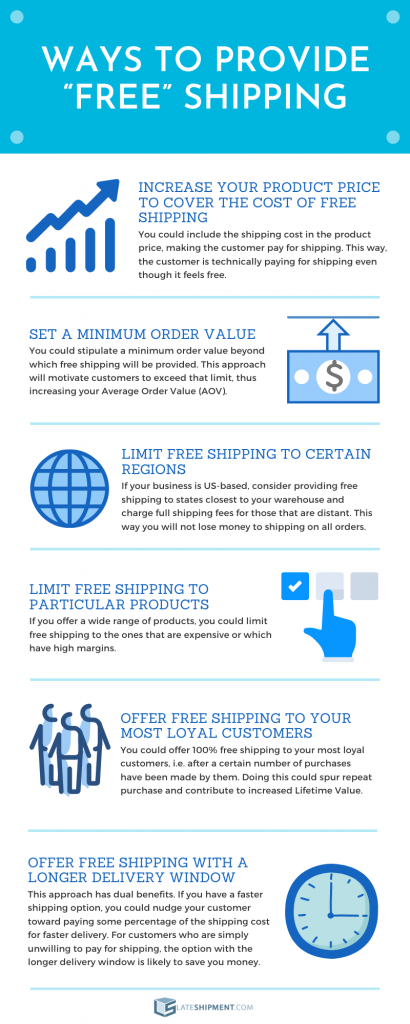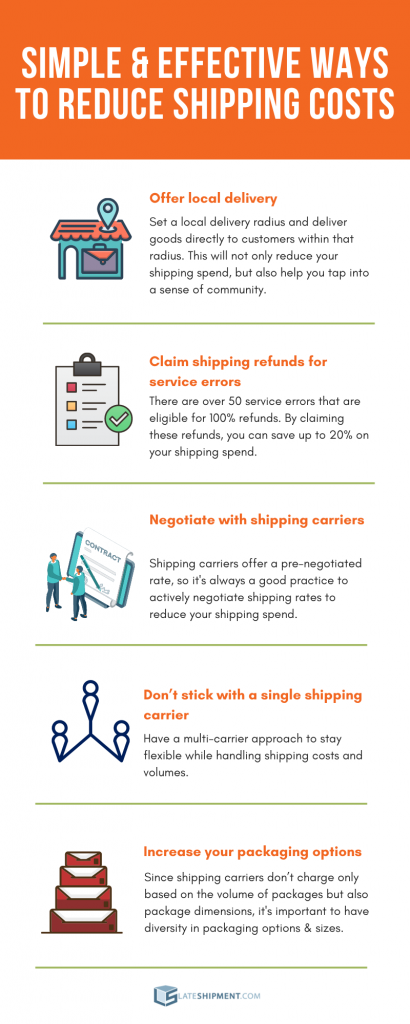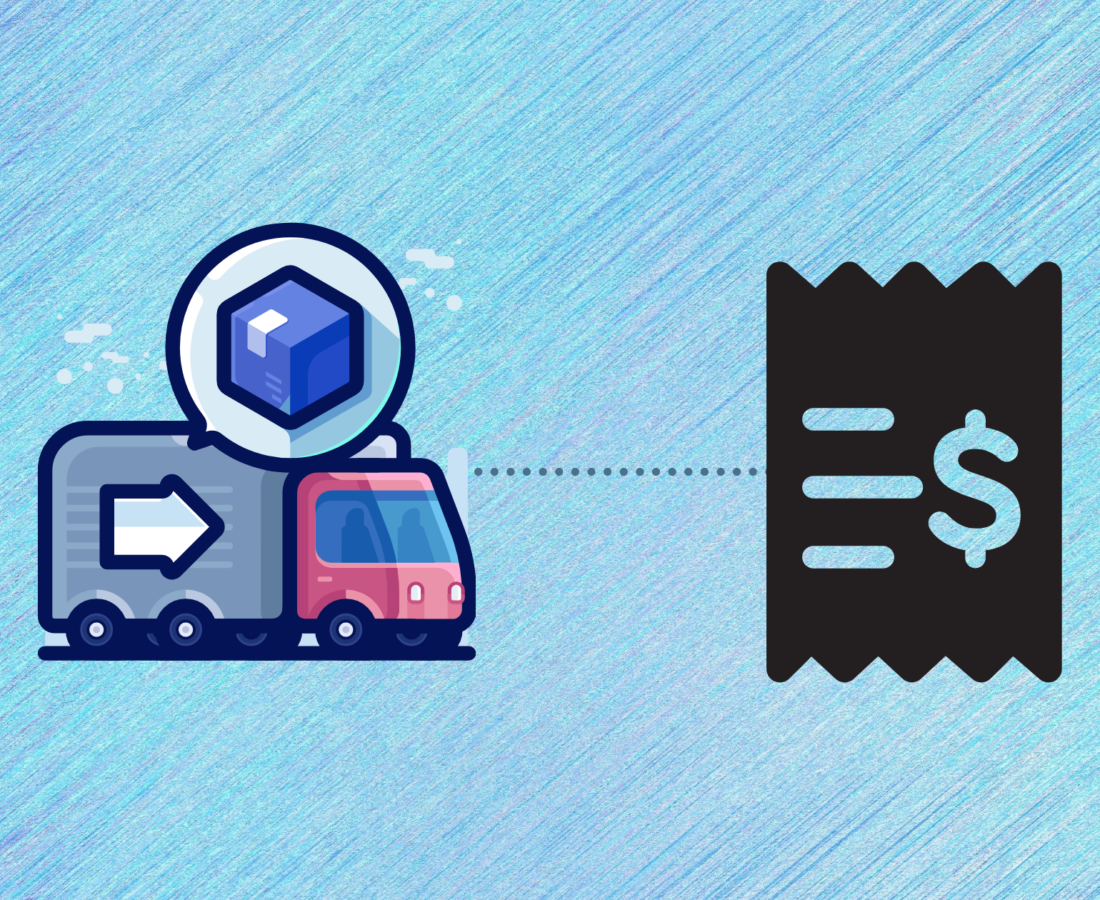Of the many reasons for cart abandonment, the shipping fee is among the biggest. It plays a crucial role in influencing consumers’ online purchasing behavior and decision making.
The truth is that today’s customers don’t appreciate a separate cost being added to their products at checkout.
In the Amazon era, customers are spoiled for choice by businesses offering free shipping and faster deliveries.
So, should you include the shipping cost in your product price?
The answer actually depends on a few factors.
What does including the shipping cost in the product price entail?
By making the shipping cost part of the product price, you totally blanket your customers from the idea that they are paying an extra amount apart from the product price, and provide the impression they are getting FREE SHIPPING for purchasing from your brand.
And boy is “FREE SHIPPING” a major hook!
According to Berman and Wharton marketing professor Barbara Kahn, there’s a certain psychology behind “FREE SHIPPING” that makes it almost mandatory to include shipping cost in overall product price. Kahn calls it the “pain tax.”
Pain tax: As humans, we have a tendency to segregate gains and take pleasure individually in each positive benefit, but when it comes to dealing with a loss — in our case paying an extra amount for shipping — we’d rather take it in one lump sum.
This means when the shipping cost is charged separately, customers perceive it as a loss on the whole, neglecting the benefits of the product they wanted to purchase, and they end up abandoning their carts.
Will free shipping impact my margin?
The answer depends on the choices you make.
Giving away shipping 100% free, which means you bear the full shipping cost from your margin, can hurt your business unless you charge a premium on your products from customers.
This is because shipping charges are dynamic and differ from location-to-location. Even the eCommerce giants, who get better shipping rates from shipping carriers, struggle to provide free shipping on all of their goods because it is still expensive.
In order to make optimal use of free shipping, you need to get the balance right.
Threshold-based free shipping or “condition-based free shipping,” where a minimum purchase limit is set, has seen good success among retailers.
In fact, 60% of eCommerce companies cite “free shipping with conditions” as their most successful marketing tool.
The reasons are obvious. On the one hand, it satisfies customers’ need for free shipping and on the other it increases the Average Order Value (AOV) of purchases by motivating customers to meet the threshold for free shipping.
You can also opt for shipping options that are less expensive or which have an extended delivery period. Based on the fact that free shipping is provided, customers who are not in immediate need of a product will still choose to wait it out.
So, what are the different ways of providing “free” shipping?
1.Increasing your product price to cover the cost of free shipping
You could include the shipping cost in the product price, making the customer pay for shipping. This way, the customer is technically paying for shipping, even though it feels free.
2. Setting a minimum order value
You could stipulate a minimum order value beyond which free shipping would be provided. This approach will motivate customers to exceed that limit, thus increasing your Average Order Value.
3. Limiting free shipping to certain regions
If your business is US-based, you could provide free shipping to states closer to your warehouse and charge full shipping fees for the states that are distant. This way you will not lose money to shipping on all orders.
4. Limiting free shipping to particular products
If you offer a wide range of products, you could limit free shipping to the ones that are expensive or which have high margins.
5. Offering free shipping to your most loyal customers
You could offer 100% free shipping to your most loyal customers, i.e. after a certain number of purchases have been made by them. Doing this could spur repeat purchase and contribute to increased Customer Lifetime Value (CLV).
6. Offering free shipping with a longer delivery window
This approach has dual benefits. If you have a faster shipping option, you could nudge your customer toward paying some percentage of the shipping cost for faster delivery. For those customers who are simply unwilling to pay for shipping, the option with the longer delivery window is likely to suffice.

There are a few other approaches you could consider while charging for shipping.
What are the other ways to charge for shipping?
1. Charging real-time carrier rates
All major shipping carriers like FedEx, UPS, USPS, DHL, etc. provide APIs that could be connected with your eCommerce platform. These APIs enable your store to calculate shipping rates live while a customer is purchasing. Shipping rates are calculated based on the product size & weight and origin & destination.
There are two benefits with this approach. Firstly, there won’t be a risk of under charging your customers. Secondly, this will earn you points for transparency.
With this strategy, there is risk of cart abandonment, but it works well if you ship to international destinations with wildly varying shipping charges.
2. Charging a flat rate
Under this strategy, you charge the same rate for all orders. This strategy works best when you have a standard product line with items that are similar in size and weight.
The benefit of offering flat rate shipping is that it makes it easy to communicate the shipping charge to customers. It also encourages customers to order large volumes since the shipping cost does not increase as the number of products in the cart increases.
One obvious disadvantage is that you might lose a few orders, so you must maintain a balance between undercharging and overcharging customers.
There are still other ways to reduce your shipping spend. Read on to learn more.
What are some simple & effective ways to reduce shipping costs?
1. Offer local delivery
This could be a simple and reliable way for you to save on your shipping costs. When you set up a local delivery service, you can set a radius within which you want to deliver to your customers. This is quick and cheaper than the traditional way of shipping.
You can maintain a tab over where you are willing to deliver for free, or else charge a low price on deliveries to reduce your shipping spend.
The best thing about handling local deliveries in house is that it allows you to stay connected with your customers throughout the delivery process and helps you build a sense of community.
2. Claim shipping refunds for service errors
Did you know that by claiming refunds for service errors committed by shipping carriers, you could save up to 20% on your shipping spend?
Shipping carriers are prone to over 50 service failures like late deliveries, lost & damaged packages, incorrect surcharges, etc. that are eligible for 100% shipping refunds.
However, many eCommerce retailers are not aware they are eligible for refunds, while those that are in the know are put off by the time-consuming claim process that has a short submission window.
LateShipment.com’s algorithms can submit shipping refund claims on your behalf and credit your account with the refunded amount, thus helping you save on shipping costs. Since the whole process is automated, you don’t have to break a sweat. More on this later.
3. Negotiate with various shipping carriers
Negotiating with shipping carriers for better rates is an important aspect of eCommerce shipping. Generally, major carriers like FedEx UPS, USPS, and Canada Post offer you pre-negotiated rates, but you should always try negotiating with these carriers for a better deal, especially if you are starting out.
While negotiating :
- Have a clear grasp of your shipping data, and use it.
- Know your average shipping volumes and ask for volume discounts.
- Watch out for hidden fees and surcharges.
- Know the types of discounts offered by shipping carriers.
LateShipment.com’s Carrier Performance report gives you access to actionable insights that will provide you leverage while renegotiating rates with your shipping carrier.
4. Don’t stick with a single shipping carrier
A multi-carrier shipping approach gives you the flexibility to choose the carrier that gives you the best rate at any given time. It also provides you the ability to switch carriers when a carrier fails to meet delivery expectations or is facing delivery issues due to high volumes.
Using a single carrier while starting out makes sense, but as your business grows and your delivery volume increases, it would be risky not to have a multi-carrier approach because it could result in delivery issues and increased shipping spend.
5. Increase your packaging options
Since shipping carriers don’t charge only based on the volume of packages but also package dimensions, it is important to have diversity in packaging options. This will help you reduce the price that you may have to pay for the extra space in your packaging.
Space in packages may also increase your package material cost and the risk of damaging your product.

Final Word
While there are different ways and approaches when it comes to dealing with shipping costs. But, as we have seen, adding shipping cost into the product price has the definite benefit of reducing the friction for customers contemplating buying your products. Yes, 100% free shipping can impact your margin, but you can always opt for conditional free shipping, or another option best suited to your business model.
A Little about LateShipment.com
LateShipment.com is the world’s only logistics cloud tool that helps businesses of every size reduce shipping costs by up to 20% and provide memorable delivery experiences to customers at scale.
At LateShipment.com, our focus has remained steadfastly on the last mile, typically the part of the logistics chain that is the most opaque.
Some of our high-impact offerings are :
- Shipping Cost Savings (up to 20%) – Automate the audit of your shipping invoices and recover refunds for 50+ service failures & billing errors including late deliveries.
- Real-Time Parcel Tracking – Monitor your outbound & inbound shipments across multiple shipping carriers on a centralized window, in real-time.
- Predictive Delay Alerts – Pay attention to daily deliveries with predictive delay alerts and more on a purpose-built dashboard for support reps.
- Proactive Issue Resolution – Proactively communicate with customers to prevent them from having bad experiences due to delivery failures.
- Delivery Status Notifications – Send custom or automated delivery status notifications to your customers for events like “shipped,” “attempted,” & “delivered.”
- Branded Order Tracking – Build fully-customizable order tracking pages for your customers to improve brand recall and sales.
- Delivery Experience Feedback – Gather feedback from customers about their delivery experience. Measure and optimize shipping operation
The best part is, it takes less than 2 minutes to see LateShipment.com in action.
The value we add to businesses is most evident when experienced first-hand. Try LateShipment.com now.








